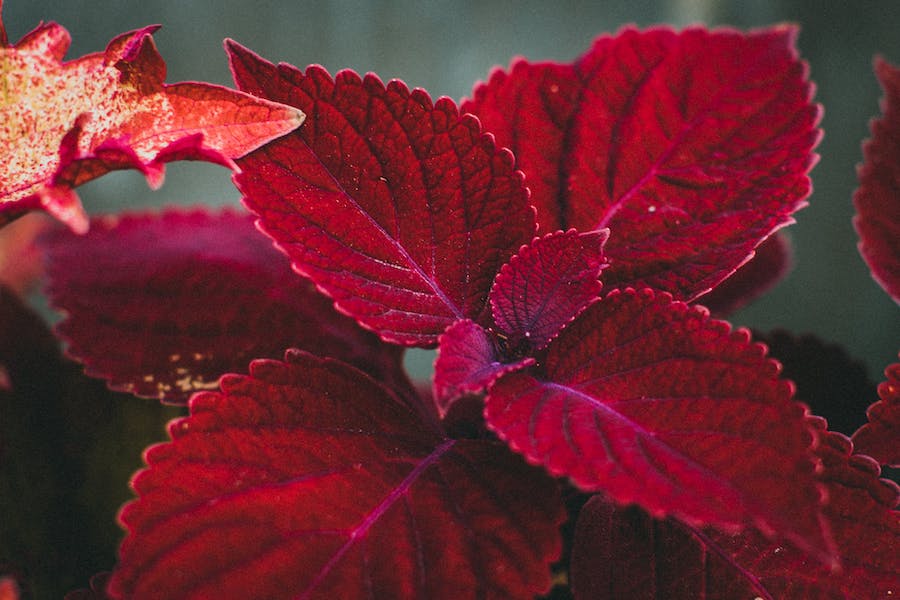Coleus plants, renowned for their vibrant foliage and versatility, have captivated gardeners and indoor plant enthusiasts alike. Originating from tropical climates, these plants are celebrated for their striking color variations and ease of care. However, a common query among coleus caretakers is regarding their lifespan. This article delves into the life expectancy of coleus plants, examining how environmental conditions, care practices, and geographical location play pivotal roles in determining their longevity. Whether grown as annuals in temperate regions or perennials in tropical settings, understanding these aspects can significantly aid in enhancing the life and vibrancy of these stunning plants.
How long do coleus plants live for?
Coleus plants, known for their stunningly colorful foliage, typically have varying lifespans depending on their growing conditions. In their native tropical climates, coleus can thrive as perennials, living for several years with proper care. However, they are often grown annually in cooler climates and last for just one growing season. Coleus can live for several years when grown indoors as houseplants, with ideal conditions of bright, indirect light and consistent moisture. Regular pruning and proper care can extend their lifespan. It’s also worth noting that coleus plants can be easily propagated from cuttings, allowing gardeners to continuously renew their coleus collections and enjoy their vibrant beauty year after year.
The Lifespan Of Coleus Plants
The lifespan of Coleus plants is quite variable and largely depends on their growing environment and care. In their native tropical environments, Coleus can live as perennials, thriving for several years if they’re well-cared for. They flourish in warm, humid conditions with adequate sunlight and moisture. In these ideal settings, with attentive pruning and proper pest management, Coleus plants can showcase their vivid foliage for an extended period.
In contrast, in cooler climates, Coleus is typically grown as annuals. They are planted in the spring, flourish through the summer, and then die back with the first frost of fall or winter. However, even in these regions, their life can be prolonged. By bringing Coleus plants indoors before the first frost and providing them with suitable indoor growing conditions, they can survive through the winter and be replanted outside the following spring.
For those growing Coleus as houseplants, their lifespan can be significantly extended. With consistent care, including proper lighting, watering, and fertilization, indoor Coleus plants can live for several years. Regular pruning not only helps in maintaining the shape and health of the plant but also encourages new and vibrant growth.
Additionally, the practice of propagation, typically through stem cuttings, plays a crucial role in the perceived longevity of Coleus. Gardeners can propagate new plants from an existing Coleus before they start to decline, creating a continuous cycle of growth and renewal, giving the impression of a longer lifespan.
In summary, while the natural lifespan of Coleus plants can vary, attentive care and appropriate growing conditions can significantly extend their vibrancy and beauty, whether they are grown as perennials in tropical climates, as annuals in cooler regions, or as flourishing houseplants.
What Factors Are Affecting Lifespan?
Various factors influence the lifespan of Coleus plants, each playing a significant role in determining how long these colorful plants thrive. Understanding and managing these factors can significantly extend the life of your Coleus plants:
Climate and Temperature: Coleus is native to tropical climates and thrives in warm, humid conditions. They are grown as annuals in cooler climates because they cannot survive frost. Perennial growth is possible in regions without harsh winters or when grown indoors.
Lighting Conditions: Coleus plants need bright, indirect light to maintain their vibrant colors. Too much direct sunlight can scorch their leaves, while too little light can cause them to become leggy and lose their vivid hues.
Watering and Humidity: Consistent moisture is critical for Coleus. Overwatering can lead to root rot while underwatering can stress the plant. Maintaining a balance is crucial. Coleus also benefits from higher humidity levels.
Soil and Fertilization: Well-draining soil prevents waterlogging and root diseases. Regular fertilization during the growing season supports healthy growth, but over-fertilization can damage the plant.
Pest and Disease Management: Coleus can be susceptible to pests like aphids, spider mites, and mealybugs, as well as diseases such as powdery mildew and root rot. Identifying and treating these issues is vital for the plant’s health and longevity.
Pruning and Maintenance: Regular pruning encourages bushier growth and prevents the plant from becoming leggy. Removing dead or yellowing leaves also helps maintain the plant’s health and appearance.
Propagation: Although not directly affecting the individual plant’s lifespan, regular propagation through cuttings can ensure a continuous supply of healthy, vigorous Coleus plants, effectively extending the lifespan of your Coleus display.
How Do You Maximize The Lifespan Of Coleus Plants?
Maximizing the lifespan of Coleus plants involves attentive care and proper environmental conditions. Here are key strategies to ensure your Coleus plants thrive for as long as possible:
- Provide Optimal Lighting: Coleus plants prefer bright, indirect light. Direct sunlight can fade their vibrant colors, so it’s important to find a spot where they receive filtered sunlight. If grown indoors, a north or east-facing window is often ideal.
- Maintain Consistent Moisture: Water your Coleus plants regularly to keep the soil moist but not waterlogged. Overwatering can lead to root rot, so ensure good drainage. In drier environments, consider increasing humidity around the plants.
- Use Well-Draining Soil: Plant your Coleus in well-draining soil to prevent water accumulation around the roots. A mixture of potting soil with perlite or vermiculite can improve drainage.
- Fertilize Appropriately: During the growing season (spring and summer), fertilize your Coleus every two to three weeks with a balanced, water-soluble fertilizer. Reduce feeding in fall and winter when the plant’s growth naturally slows.
- Prune Regularly: Pruning helps maintain an attractive shape and encourages bushier growth. Pinch off flower buds to direct the plant’s energy into foliage production.
- Pest and Disease Control: Regularly inspect your plants for signs of pests or disease. Treat infestations promptly with appropriate measures such as insecticidal soaps or neem oil.
- Avoid Extreme Temperatures: Protect Coleus from extreme temperatures. If grown outdoors, bring them inside before the first frost. Indoors, keep them away from drafty windows and heating vents.
- Overwintering Indoor Coleus: If you live in a cooler climate, overwintering Coleus indoors can help them survive longer. Before bringing them inside, inspect them for pests and place them in a sunny spot.
- Regular Inspection and Adjustment: Regularly check your plants for signs of stress and adjust care as needed. This includes altering watering schedules, moving them to a better-lit area, or adjusting room temperature.
Benefits Of Regular Propagation
Regular propagation of Coleus plants provides many benefits, extending beyond simple plant replacement to encompass aspects of garden management, cost-effectiveness, and personal enjoyment. Here’s a more detailed exploration of these advantages:
Continuous Renewal of Plant Stock:
As Coleus plants age, they may become leggy or lose the intensity of their leaf coloration. Through regular propagation, gardeners can continually renew their plant stock, ensuring a consistent display of the plant’s vibrant foliage. This is particularly important for maintaining the aesthetic appeal of gardens or indoor plant collections.
Preservation of Unique Varieties:
For those who cultivate unique or particularly stunning varieties of Coleus, propagation is a way to preserve these remarkable plants. If a specific variety is hard to find or has sentimental value, propagation ensures its continued presence in your garden.
Economic Plant Expansion:
Buying new plants can be expensive. Propagation allows gardeners to expand their plant collection at no additional cost. It’s economical to fill garden spaces or create lush indoor plant arrangements.
Simple and Rewarding:
Propagating Coleus is a straightforward process, making it an ideal project for beginner and experienced gardeners. Coleus propagation’s ease and success rate provide a rewarding experience, offering a sense of accomplishment as cuttings grow into healthy, full-fledged plants.
Sharing and Community Building:
Propagation enables sharing plants with friends, family, and fellow gardening enthusiasts. This sharing can foster a sense of community and connection and be a means to introduce others to gardening.
Healthier Plants:
Younger plants propagated from healthy parents often exhibit more vigor and are less prone to diseases and pest infestations than older, potentially stressed plants. Regularly cycling through new propagations can help maintain a healthier overall collection.
Design Flexibility in Landscaping and Indoor Decor:
With a steady supply of new plants, gardeners can experiment with different landscaping designs or refresh indoor decor regularly. Propagation provides a continuous resource for creative gardening projects.
Adaptability for Indoor and Outdoor Settings:
Propagated Coleus plants can easily adapt to indoor and outdoor environments. This adaptability allows for a seamless transition of plants from outdoor gardens to indoor spaces for overwintering.
Conclusion
The lifespan of Coleus plants is not fixed and can vary greatly depending on various factors, including climate, care, and propagation practices. In their native tropical environments, Coleus can live as perennials, thriving for several years under optimal conditions. However, in cooler climates that are not winter-hardy, Coleus are typically treated as annuals, enjoying a single season of growth before succumbing to frost. When grown indoors as houseplants, they can have an extended lifespan, potentially living for several years with proper care. Key to extending the life of Coleus plants is understanding and providing their ideal growing conditions – appropriate lighting, consistent moisture, well-draining soil, and protection from extreme temperatures. Regular pruning, pest and disease management, and fertilization are crucial in maintaining plant health.










Leave a Reply